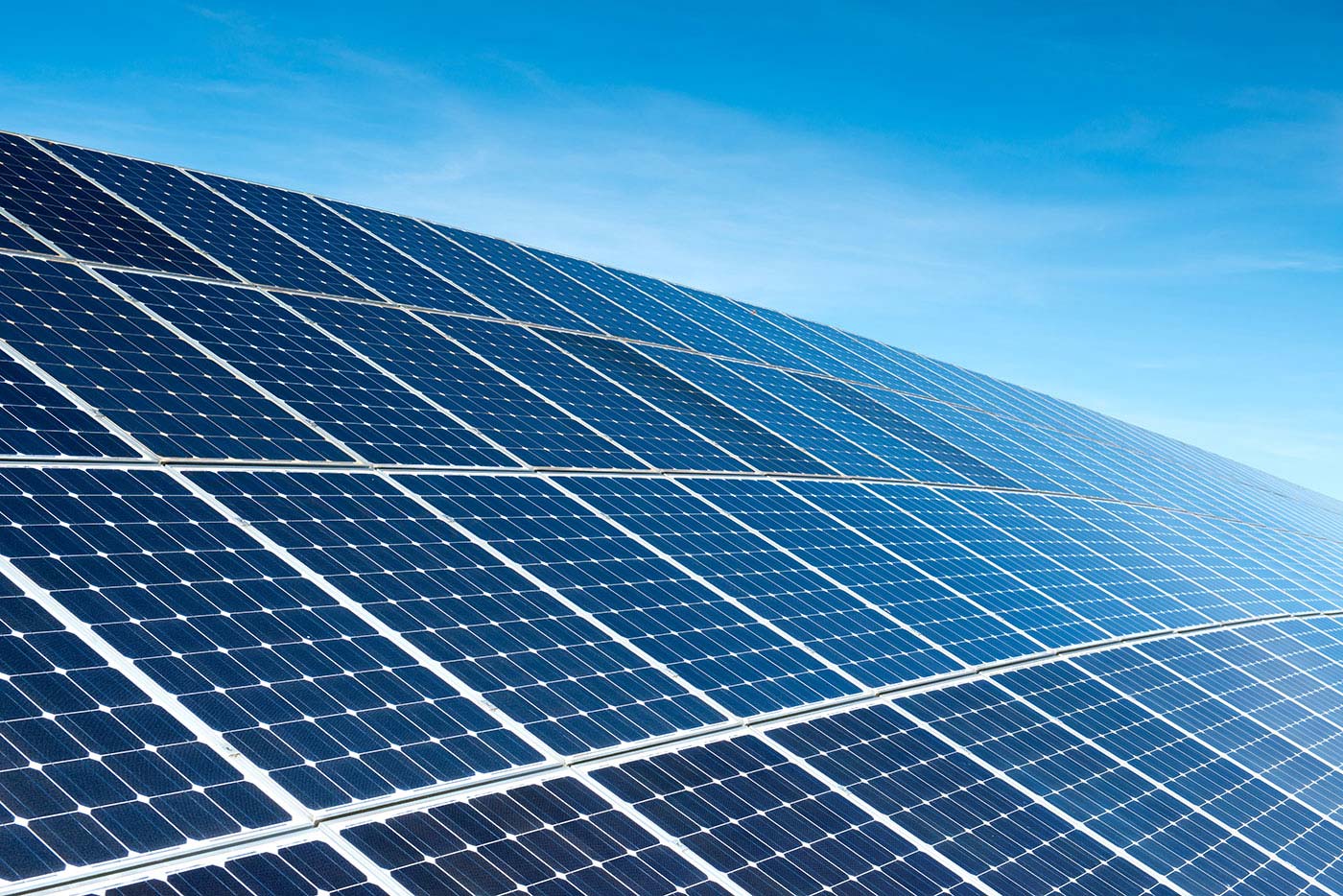
Alternative Energy is a Sustainable Solution
Sustainable Solution for a Greener Future
![]() In today’s modern world there is a growing concern about the impact fossil fuels are directly having on our environment and the need for more greener and cleaner sustainable energy sources. Alternative energy is a sustainable solution for the future offering many clean and green ideas and solutions to the incineration of fossil fuels and their challenges.
In today’s modern world there is a growing concern about the impact fossil fuels are directly having on our environment and the need for more greener and cleaner sustainable energy sources. Alternative energy is a sustainable solution for the future offering many clean and green ideas and solutions to the incineration of fossil fuels and their challenges.
Global demand for all forms of energy continues to grow with fossil fuel utilization still a major concern as the implementation of renewable energy sources are still low in comparison. Thus much more remains to be done in order to shift the world’s energy usage from carbon based fuels and towards more sustainable solutions, such as wind, solar, and water power.
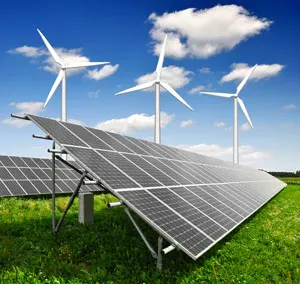
This Alternative Energy Tutorial explores the basic concept of alternative energy, its difference from renewable energy, and highlights some of the best types of alternative energy sources available today. We will also discuss the environmental benefits of alternative energy and its potential to replace fossil fuels in the near future with cleaner less polluting alternatives.
What is Alternative Energy as a Sustainable Solution
Alternative energy refers to energy sources that are NOT derived from fossil fuels such as coal, oil, and natural gas. The burning of these types of fossil fuels releases greenhouse gases, such as carbon dioxide and methane into the atmosphere upsetting the earth’s natural balance producing global warming, also known as climate change.
Unlike fossil fuels, alternative energy sources such as: solar power, wind energy, hydroelectric power, geothermal energy, biomass energy, nuclear power, tidal energy, and wave energy produce little to no greenhouse gas emissions when operating, making them more environmentally friendly. Moreover, sustainable energy sources can help meet the world’s needs without harming the environment or depleting all of its finite resources.
Difference Between Alternative and Renewable Energy Sources
While all renewable energy sources can be considered as being “alternative energy sources”, not all alternative energy sources are renewable. Renewable energy sources, such as solar power and wind energy, are derived from naturally replenished sources or processes, making them inexhaustible. On the other hand, alternative energy sources like nuclear power and biomass energy may not be renewable due to their reliance on finite resources or the need for sustainable practices. It is important to consider both renewable and alternative energy sources in our transition to a sustainable energy future.
Best Types of Alternative Energy Sources
 1. Solar Energy: Solar energy is the main renewable energy resource throughout the world since it is an abundant energy source. It harnesses the energy of the sun using photovoltaic cells connected together to form solar panels.
1. Solar Energy: Solar energy is the main renewable energy resource throughout the world since it is an abundant energy source. It harnesses the energy of the sun using photovoltaic cells connected together to form solar panels.Solar energy is a widely accessible and renewable source of energy since photovoltaic panels work anywhere on earth where the sun shines, and the sunnier it is, the more the electricity they can produce. Hopefully, as prices continue to drop, photovoltaic electricity production will become cost effective as well as increasingly affordable and efficient.
 2. Wind Energy: Like solar, the fuel source for wind power is free and unlimited using the kinetic energy of the moving wind to generate electricity with wind turbines. Wind energy is a clean and abundant source of energy, particularly in areas with consistent wind patterns. But one of the challenges associated with wind power is its intermittency. That is, wind turbine generators do not need gusty winds, only moderate but steady winds.
2. Wind Energy: Like solar, the fuel source for wind power is free and unlimited using the kinetic energy of the moving wind to generate electricity with wind turbines. Wind energy is a clean and abundant source of energy, particularly in areas with consistent wind patterns. But one of the challenges associated with wind power is its intermittency. That is, wind turbine generators do not need gusty winds, only moderate but steady winds.Wind energy is believed to be the most advanced renewable energy technology with its implementation growing at a steady rate over the years. The advantages of wind power once installed is that it emits no greenhouse gas emissions. However, wind power has three major environmental impacts: rotational noise of the blades, its visual impact on the surrounding environment, and the risk of bird collisions and disruption of wild life.
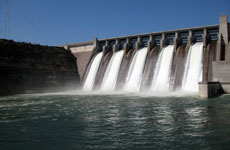 3. Hydroelectric Energy: Hydroelectric power, simply known as hydropower, accounts for the major percentage of the renewable power generation with some countries getting virtually all their electricity production from hydropower. Hydropower generates electricity by harnessing the energy of flowing or falling water. Dams and turbines are used to convert the water’s energy into electrical power.
3. Hydroelectric Energy: Hydroelectric power, simply known as hydropower, accounts for the major percentage of the renewable power generation with some countries getting virtually all their electricity production from hydropower. Hydropower generates electricity by harnessing the energy of flowing or falling water. Dams and turbines are used to convert the water’s energy into electrical power.Making use of the force of falling water as a source of mechanical power to drive waterwheels, screws, buckets, and turbines has been around since the ancient times with the three main kinds of hydropower generation being from: Water Storage, Pumped Storage and Run-of-river types projects. Large-scale hydropower projects can often become controversial, as they require large dams and reservoirs to be built.
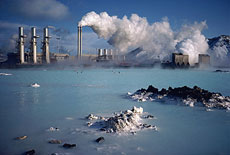 4. Geothermal Energy: Geothermal energy taps into the Earth’s natural heat to generate electricity or provide space heating and cooling. It utilises underground reservoirs of hot water which becomes steam when it is pumped through boreholes. The steam returns to the surface and is used to generate electricity.
4. Geothermal Energy: Geothermal energy taps into the Earth’s natural heat to generate electricity or provide space heating and cooling. It utilises underground reservoirs of hot water which becomes steam when it is pumped through boreholes. The steam returns to the surface and is used to generate electricity.Geothermal energy has many advantages since it is non-polluting, has no carbon footprint, with the heat stored in the earth crust enough to power the planet indefinitely. Also, compared with wind and photovoltaic generated electricity, which can be intermittent, geothermal electricity can be generated around the clock.
 5. Biomass Energy: Biomass is a renewable energy source derived from organic matter such as plants, crops, and waste materials. It has been a major energy source for mankind for thousands of years, and long before the discovery of fossil fuels like coal and petroleum oil. Fuels derived from biomass can be used for heat generation or converted into biofuels for transportation and electricity production.
5. Biomass Energy: Biomass is a renewable energy source derived from organic matter such as plants, crops, and waste materials. It has been a major energy source for mankind for thousands of years, and long before the discovery of fossil fuels like coal and petroleum oil. Fuels derived from biomass can be used for heat generation or converted into biofuels for transportation and electricity production.Forest residues such as dead trees, branches and tree stumps, as well as yard clippings, wood chips and garbage may all be used to produce biomass. Biomass gasification is a process which can convert biomass feedstocks into carbon monoxide and hydrogen at high temperatures to produce a gaseous mixture called “synthesis gas” or Syngas which can itself be used directly as a fuel for cooking or transportation.
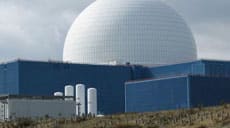 6. Nuclear Energy: Nuclear power is generated through nuclear fission, which releases a significant amount of energy. Despite its controversies, nuclear energy plays an important role in curbing greenhouse gas emissions while providing a reliable and low-carbon source of power. As such, nuclear power has been considered as a renewable energy power source for some time now.
6. Nuclear Energy: Nuclear power is generated through nuclear fission, which releases a significant amount of energy. Despite its controversies, nuclear energy plays an important role in curbing greenhouse gas emissions while providing a reliable and low-carbon source of power. As such, nuclear power has been considered as a renewable energy power source for some time now.Nuclear power is recognised as a reliable, safe, clean and cheap source of energy production with the production of electricity by a nuclear reactor is accomplished by utilising the heat from the fission reaction to drive steam turbines. While nuclear reactors are expensive to build, they can be relatively inexpensive to operate producing a cheap source of electrical energy.
 7. Tidal Energy: Tidal energy is a form of marine energy or ocean energy obtained from oceans, seas, and other large bodies of moving water. The energy carried by ocean currents is harnessed to generate electricity or other useful forms of power using tidal barrages or tidal stream generators. Tides and tidal flows are more predictable than wind energy and solar power with tidal data for shipping plotted many years in advance.
7. Tidal Energy: Tidal energy is a form of marine energy or ocean energy obtained from oceans, seas, and other large bodies of moving water. The energy carried by ocean currents is harnessed to generate electricity or other useful forms of power using tidal barrages or tidal stream generators. Tides and tidal flows are more predictable than wind energy and solar power with tidal data for shipping plotted many years in advance.The oceans store a tremendous amount of energy with its circulating currents driven by the wind and the solar heating of the oceans waters. Tidal energy devices harness the kinetic energy of the ocean currents, offering a predictable and renewable energy source. Clearly, the stronger the tidal flow, either in water level height or tidal current speed, the greater the potential for tidal electricity generation at a particular location.
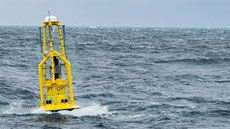 8. Wave Energy: Wave energy captures the energy from ocean waves and converts it into electricity. Wave energy can be considered as a concentrated form of solar energy since waves are generated by the movement of the wind passing over the surface of the water transferring some of its energy to produce waves.
8. Wave Energy: Wave energy captures the energy from ocean waves and converts it into electricity. Wave energy can be considered as a concentrated form of solar energy since waves are generated by the movement of the wind passing over the surface of the water transferring some of its energy to produce waves.The amount of energy transferred, and therefore the size of the resulting waves, will ultimately depend on the wind speed, the length of time the wind is blowing over the waters surface and the distance over which it blows. Clearly, the larger the waves, the more potential energy stored within it. Thus this emerging technology has the potential to provide a consistent, renewable and clean energy source.
Environmental Benefits of Alternative Energy
The environmental and economic benefits of using alternative energy sources are numerous, improving our health, environment, and the economy. There are many positive impacts associated with alternative energy and the environment, with the four principal ones listed below:
- Reduced Carbon Footprint: Alternative energy sources produce minimal to no greenhouse gas emissions, helping to combat climate change and reduce air pollution.
- Conservation of Fossil Fuels: By utilizing alternative energy sources, we can reduce our reliance on finite fossil fuel reserves and extend their availability for future generations.
- Mitigation of Environmental Damage: Fossil fuel extraction and combustion contribute to environmental degradation, including air and water pollution, habitat destruction, and climate change. Alternative energy sources offer a cleaner world as well as a more sustainable approach.
- Preservation of Ecosystems: The use of alternative energy minimizes the impact on natural habitats, protecting biodiversity and preserving ecosystems for future generations.
The Potential of Alternative Energy to Replace Fossil Fuels
As the world becomes more aware of the environmental impact of fossil fuels, the demand for a more sustainable solution for the future will continue to rise. The declining costs of renewable technologies, such as solar and wind power, make them increasingly competitive and economically viable alternatives to fossil fuels. In some cases, renewable power generation has already become cheaper than fossil fuels for electricity production.
Wind energy and solar energy have emerged as the most affordable options for energy production, with the potential to save billions in power system expenses and significantly reduce carbon dioxide emissions. Other sources such as bioenergy, geothermal energy, hydroelectric power, and nuclear energy are also gaining traction in terms of cost-effectiveness, depending on location and technological advancements.
In terms of energy efficiency, wind energy stands out as a leader among renewable energy sources. It is followed by geothermal energy, hydropower, nuclear energy, and solar power. These energy sources demonstrate their potential to meet our energy needs while minimising environmental impacts.
Nuclear energy, despite its controversies, boasts the highest capacity factor among all energy sources, ensuring a consistent and reliable power supply. Additionally, the development of renewable natural gas (RNG) offers a sustainable solution for the future compared to conventional natural gas, further reducing emissions.
Sustainable Solution Tutorial Conclusion
The rise of alternative energy is a tremendous step forward in finding a sustainable solution for the future. With the increasing concerns about climate change and the depletion of fossil fuels, it is essential to explore and invest in alternative sources of energy. These renewable sources, such as solar, wind, and hydroelectric power, offer numerous benefits for both the environment and our economy. Not only do they produce clean energy with minimal greenhouse gas emissions, but they also create new job opportunities and reduce our dependence on finite resources.
The increase in alternative energies represents a crucial step towards a sustainable and greener future. Embracing both renewable and alternative energy sources is not only a responsible choice but also a promising path towards a more sustainable future by reducing our carbon footprint, mitigate climate change, and preserve our planet’s resources and ecosystems.
The continued development and adoption of alternative clean energy technologies will pave the way for a more sustainable energy landscape, ultimately replacing our dependence on finite fossil fuels. It is up to governments, businesses, and individuals to embrace a sustainable solution for a greener future contributing to a brighter and cleaner future for generations to come.
To learn more about why alternative energy is a sustainable solution for the future, or to obtain more information about the various alternative energy technologies available. Or maybe you just want to explore the advantages and disadvantages of sustainable solutions for your home. Then Go to Amazon to see a range of books related to sustainable solutions direct from Amazon today.











Please Speak up!
We hope this Sustainable Solution for the Future Tutorial was useful and informative for you. Are you ready to share your thoughts
and experience with us and many others. Your comments are always welcome, just post them in the section below.
P.S. Don't forget to like, rate, and share this Alternative Energy Tutorials post. Thank you for using our website.